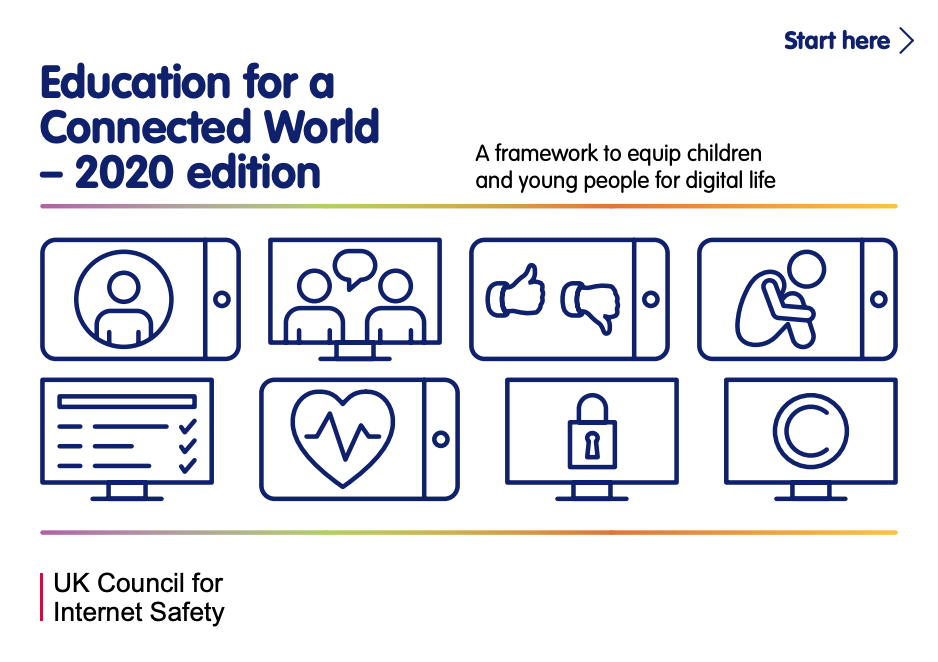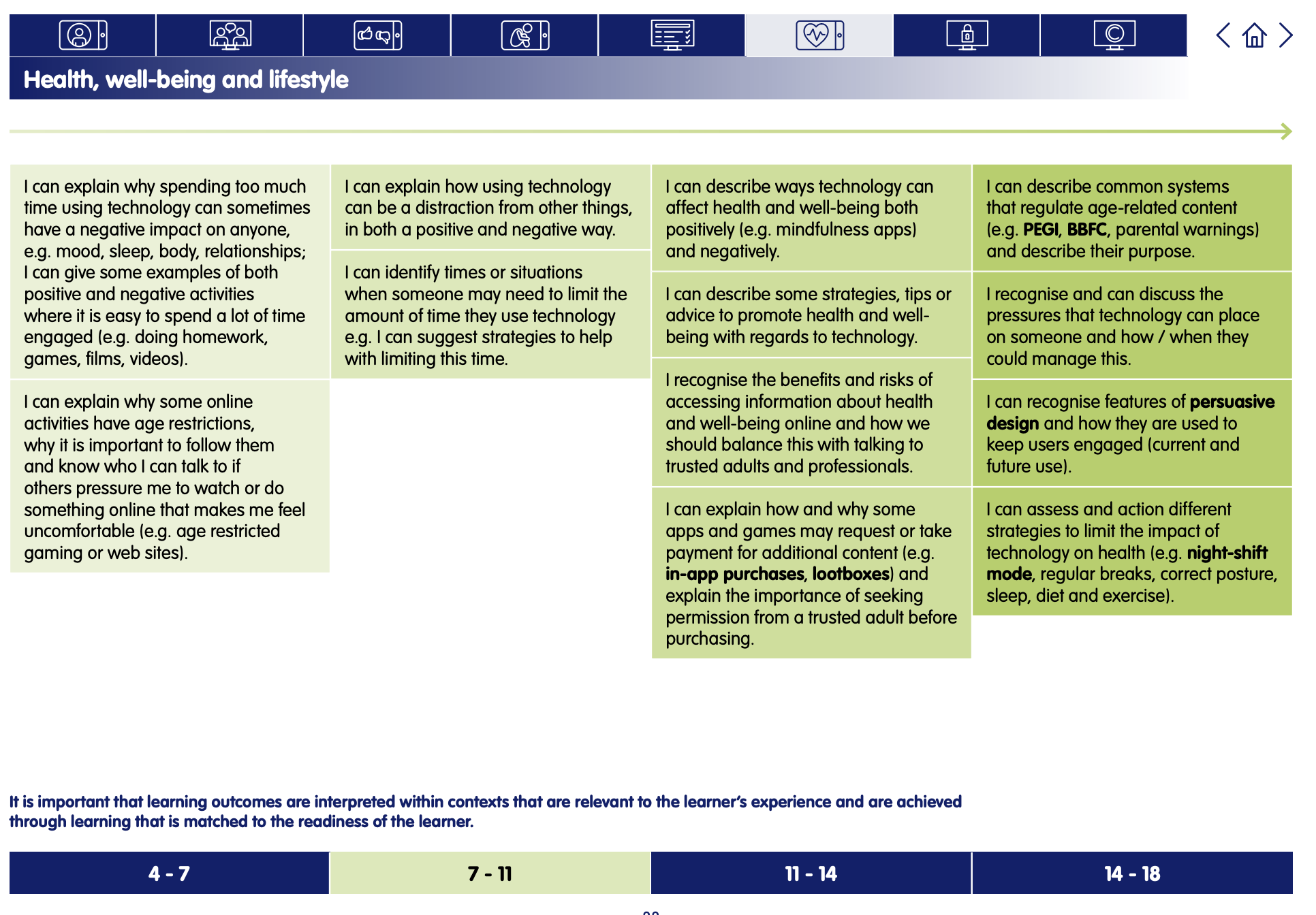Finding My Media Balance
Digital Literacy and Online Safety (Y6) - Lesson 1
A note about this lesson

This lesson is taken from Common Sense Education’s excellent Digital Citizenship curriculum. Their resources are shared for free under A Creative Commons Attribution- NonCommercial- NoDerivatives 4.0 International License.
You can find the original resources HERE.
Objectives
- Reflect on how balanced they are in their daily lives.
- Consider what "media balance" means, and how it applies to them.
- Create a personalised plan for healthy and balanced media use.
Lesson 1 - Finding My Media Balance
Lesson 2 - You Won't Believe This!
Lesson 3 - Beyond Gender Stereotypes
Lesson 4 - Digital Friendships
Lesson 5 - Is It Cyberbullying?
Lesson 6 - Reading News Online
Links to Education for a Connected World.
This lesson from Common Sense Media's Digital Citizenship curriculum links to the following strands from the Health, well-being and lifestyle section of the Education for a Connected World framework.
Introduction - My Perfect Day
Helping kids learn what makes different media choices healthy or not is a good start. But how do we help them actually make responsible choices in the real world? Give your students the opportunity to create a personalised media plan.
Before the lesson: As an optional activity before the lesson, have students play the Twalkers game in Digital Passport™ by Common Sense Education. This will help introduce key concepts of this lesson. To see more, check out the Digital Passport Educator Guide.
Distribute the My Perfect Day Student Handout and allow students 10 minutes to complete it. (Slide 4).
Invite students to share. For each student who shares, follow up by highlighting any activities involving:
- Digital media (TV, movies, video games, texting, etc.)
- Non-digital media (books, magazines, etc.)
- Friends and/or family
- The outdoors
- Alone time
- Hobbies
Ask: Now imagine that your perfect day will be granted -- it's going to happen -- but it has to happen for a week straight. For seven straight days, you will do the same thing -- all the things in your perfect day. Given that, would you change anything in your perfect day? If so, what? Share your ideas with your partner. (Slide 5)
Invite students to share. Highlight any changes that result in more balance between the types of activities listed in step 2. For students whose perfect days involve only one or two types of activities, follow up by asking how they'd feel missing out on the other types. For example, how would they feel not seeing their family for a week? Or not having any alone time? Or not spending time outdoors?
What is Media Balance?
Note: This activity includes the My Media Balance video, which is also included in the Grade 4 Lesson My Media Choices. Even if students have previously seen the video as part of that lesson, it still may be useful to show it again, as the discussion question and context are different in this lesson.
Project Slide 6 and ask: What do you think of when you see these images? What do they show? Share your ideas with a partner.
Invite students to share. Explain that they show balance, which is when all of the parts are in the correct -- though not necessarily equal -- proportions. For example, for a scale to be balanced, it needs to have equal weights on both sides. Or, for life to feel balanced, it might mean spending time doing different things (time with friends, time with family, time for work, time for hobbies, etc.) but maybe not all in the exact same amount. (Slide 7)
Say: Today we're going to talk about balance in terms of how we use media. This includes how we use devices, like phones or laptops or television, and also things that are non-digital, like books or magazines. Media includes all of the ways that large groups of people get and share information (TV, books, internet, newspapers, phones, etc.).
Show the My Media Balance video on Slide 8 and ask: According to the video, what is media balance? Take turns sharing your ideas with a partner.
Invite students to respond. Prompt students to support their answers by referring to the What? When? How Much? framework (Slide 9) and considering how different activities make them feel. Define media balance as using media in a way that feels healthy and in balance with other life activities (family, friends, school, hobbies, etc.). (Slide 10)
Ask: Do you think your perfect day -- which you'll be experiencing for a week -- was balanced? Why or why not?
Invite students to share. Prompt students to support their answers by referring to how much they included different types of activities:
- Digital media (TV, movies, video games, texting, etc.)
- Non-digital media (books, magazines, etc.)
- Friends and/or family
- The outdoors
- Alone time
- Hobbies
You can also ask students to support their answers by referring to whether or not their choices made them feel positive and healthy.
My Media Plan
Distribute the My Media Balance Student Handout and say: Now that we've talked about balance and the activities that make you feel positive and healthy, you're going to make a media balance plan.
Read the directions from the handout and allow students time to work individually to complete their media plan, including the reflection questions. (Slide 11)
If time permits, invite a few students to share their media plan with the class.
Collect handouts and use them to assess student learning.
Have students complete the Lesson Quiz. Send home the Family Activity and Family Tips.
Extension Activity:
Have students design and create a poster-like version of their media plan to share with parents, post on their refrigerator, etc.


